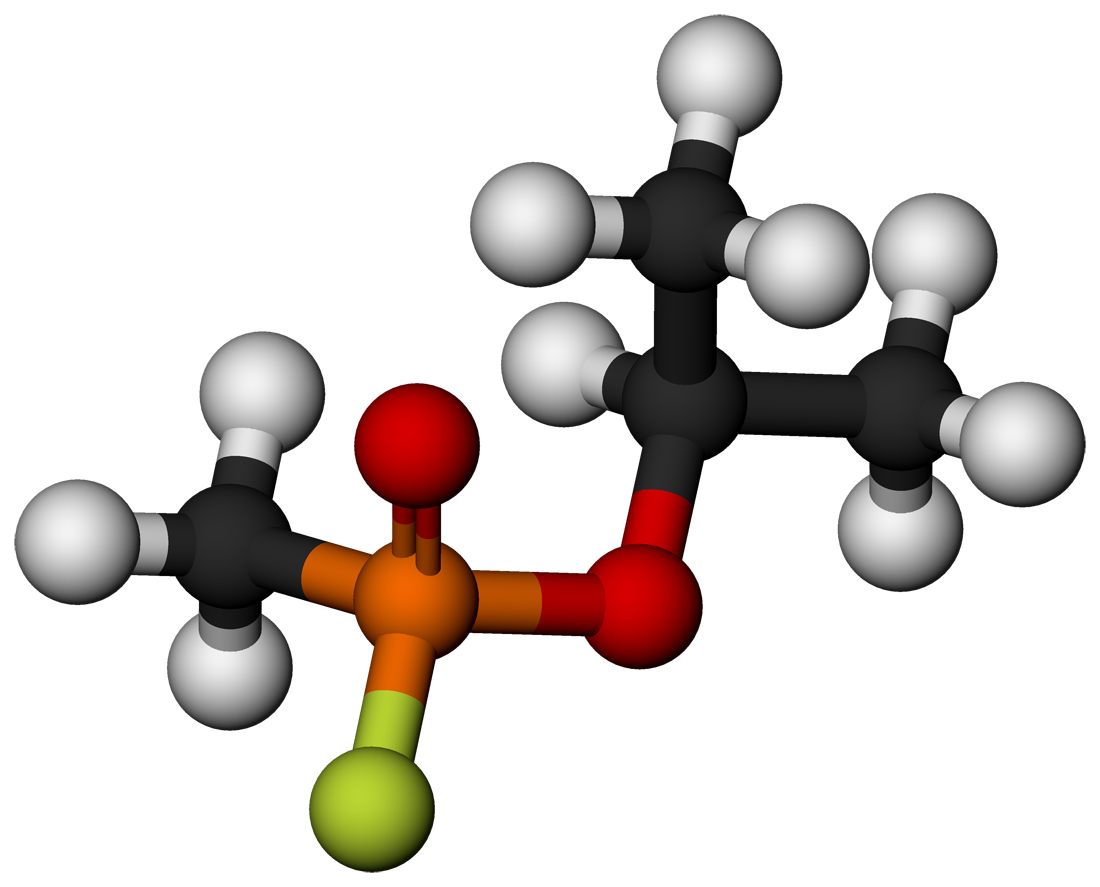Sarin - Gas
Sarin, or GB, is an organophosphorus compound with the formula [(CH3)2CHO]CH3P(O)F. It is a colorless, odorless liquid,[4] used as a chemical weapon owing to its extreme potency as a nerve agent. It has been classified as a weapon of mass destruction in UN Resolution 687. Production and stockpiling of sarin was outlawed by the Chemical Weapons Convention of 1993 where it is classified as a Schedule 1 substance.
Its mechanism of action resembles that of some commonly used insecticides, such as malathion. In terms of biological activity, it resembles carbamate insecticides such as Sevin and medicines pyridostigmine, neostigmine, and physostigmine. Like other nerve agents, sarin attacks the nervous system.
Specifically, sarin is a potent inhibitor of the enzyme cholinesterase.[7] Sarin acts on cholinesterase by forming a covalent bond with the particular serine residue at the active site. Fluoride is the leaving group, and the resulting phosphoester is robust but biologically inactive.[8][9] With the enzyme inhibited, acetylcholine builds up in the synapse and continues to act so that any nerve impulses are, in effect, continually transmitted. Normally, the acetylcholinesterase breaks down the acetylcholine in the synaptic cleft in order to allow the effector muscle or organ to relax.

